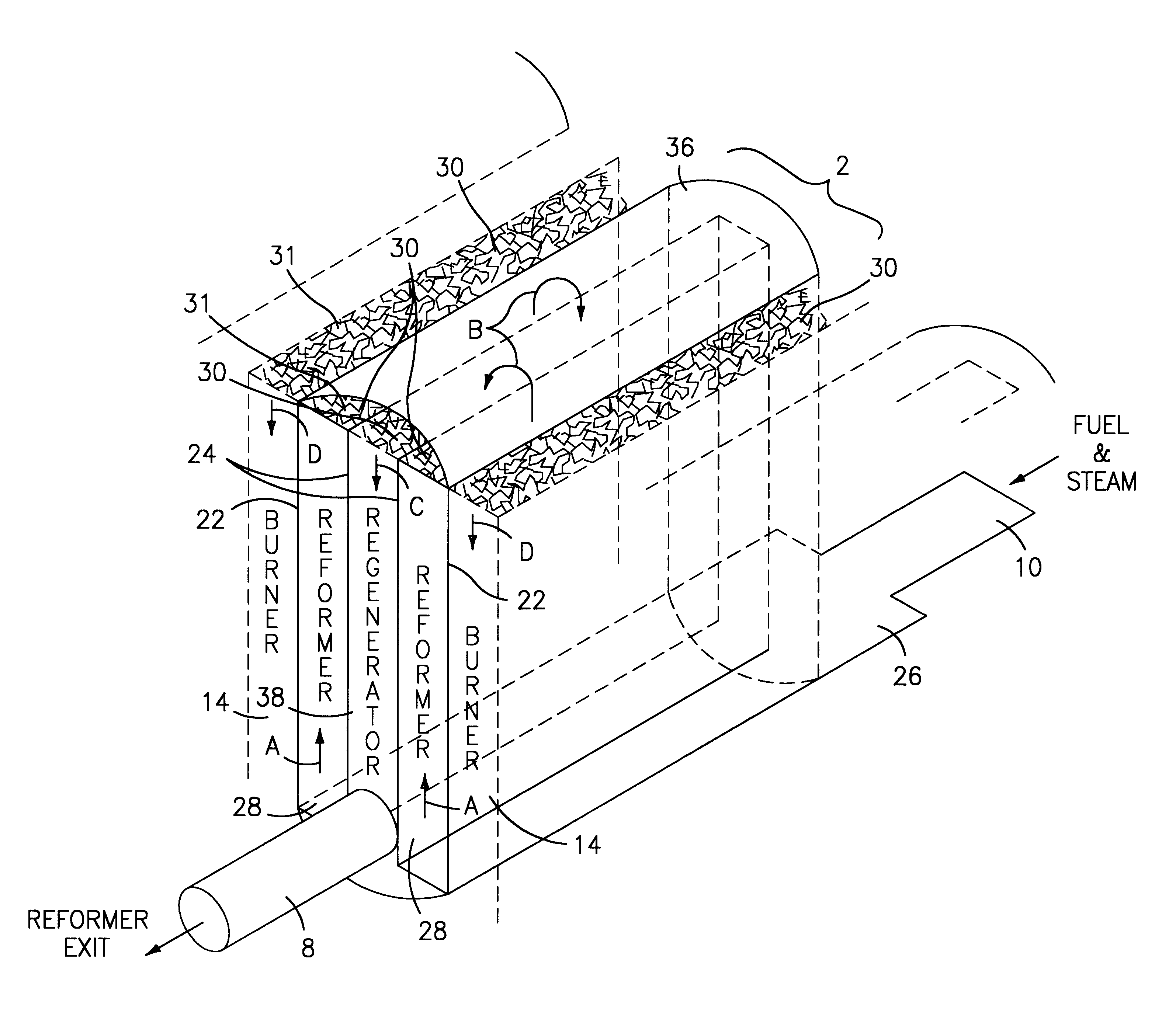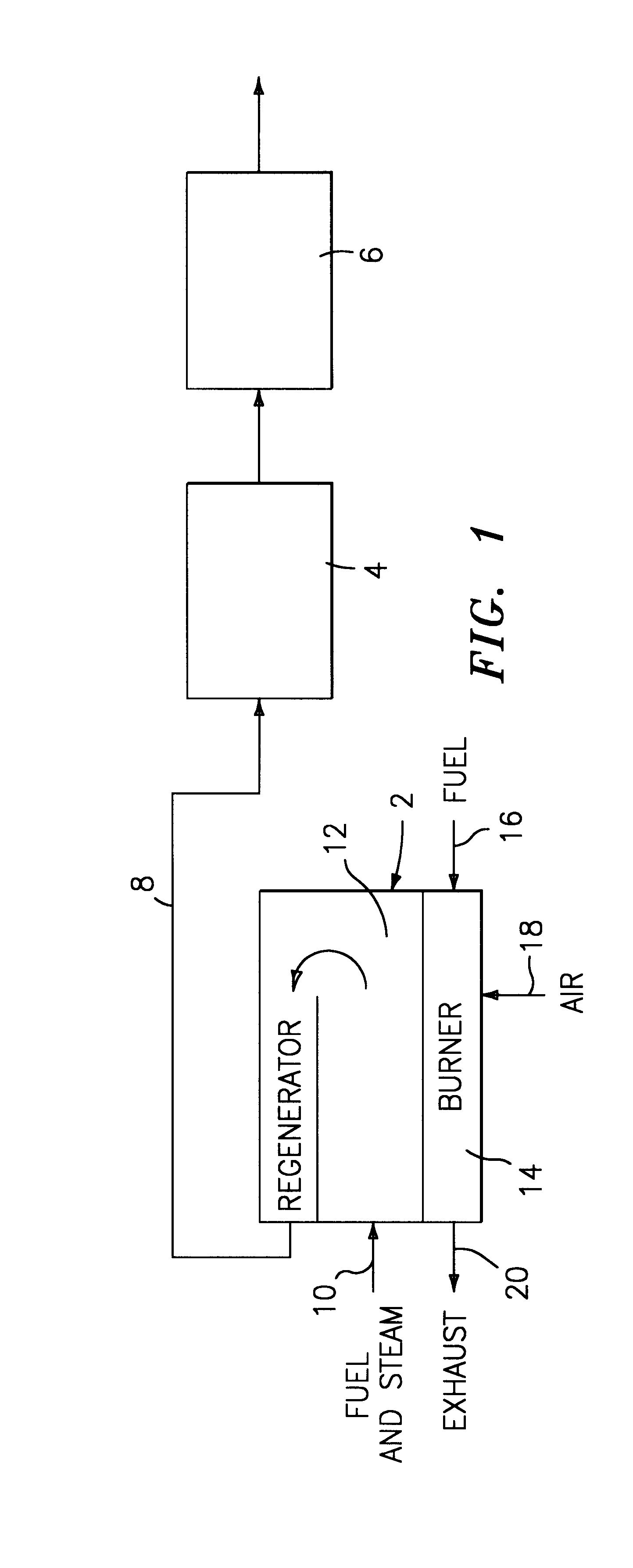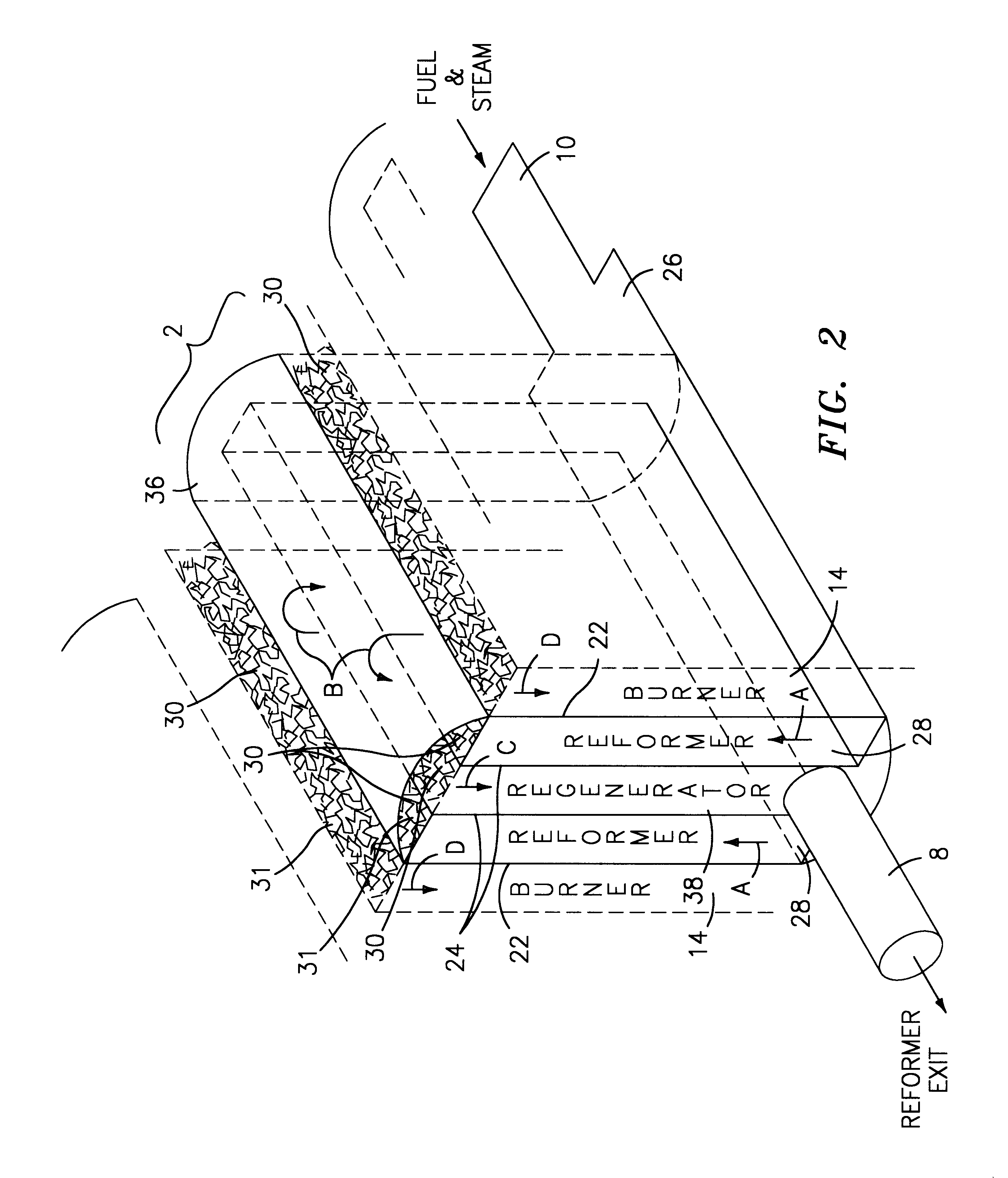Compact fuel gas reformer assemblage
a fuel gas reformer and compact technology, applied in the direction of combustible gas production, lighting and heating apparatus, combustion types, etc., can solve the problems of unsatisfactory large and heavy reformer assembly
- Summary
- Abstract
- Description
- Claims
- Application Information
AI Technical Summary
Benefits of technology
Problems solved by technology
Method used
Image
Examples
Embodiment Construction
Referring now to the drawings, there is shown in FIG. 1 a schematic view of a fuel processing assembly which forms a portion of a typical fuel cell power plant. The fuel processing assembly includes a fuel steam reformer regenerator station 2; a shift converter station 4; and a selective oxidizer station 6 which may be required for certain fuel cells that are intolerant to high levels of carbon monoxide. The reformer-regenerator 2 is connected to a shift converter 4 by means of a line 8. The reformer-regenerator station 2 includes a fuel and steam inlet line 10 which feeds the fuel and steam mixture into the catalyzed reformer zone 12. A mixture of partially spent fuel from the fuel cell stack and air is fed into a burner component 14 via lines 16 and 18. The aforesaid mixture is combusted therein to heat the fuel and steam mixture to reacting temperatures. The burner 14 is exhausted from the reformer-regenerator 2 via line 20.
FIG. 2 is a schematic representation of an embodiment of...
PUM
| Property | Measurement | Unit |
|---|---|---|
| temperature | aaaaa | aaaaa |
| volume | aaaaa | aaaaa |
| heat transfer | aaaaa | aaaaa |
Abstract
Description
Claims
Application Information
 Login to View More
Login to View More - R&D
- Intellectual Property
- Life Sciences
- Materials
- Tech Scout
- Unparalleled Data Quality
- Higher Quality Content
- 60% Fewer Hallucinations
Browse by: Latest US Patents, China's latest patents, Technical Efficacy Thesaurus, Application Domain, Technology Topic, Popular Technical Reports.
© 2025 PatSnap. All rights reserved.Legal|Privacy policy|Modern Slavery Act Transparency Statement|Sitemap|About US| Contact US: help@patsnap.com



